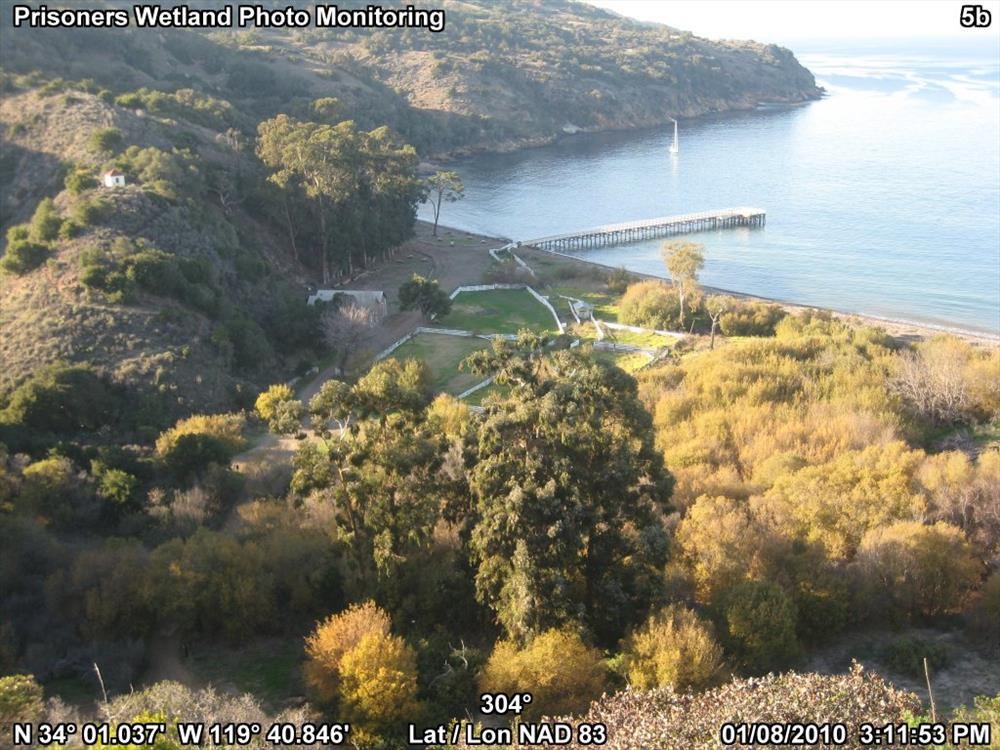Part of a series of articles titled Crystal Clear: A Call to Action.
Article
Crystal Clear: Prisoners Harbor Coastal Wetland Restoration

NPS Photo
Background
Wetlands in California are important, yet rare and diminishing, ecosystems. Ninety-five percent of all wetlands in California have been altered or filled, reducing habitat for untold numbers of resident birds, amphibians, fish, and other wildlife, as well as migratory birds in need of resting sites on their long journeys. The restored Prisoners Harbor coastal wetland provides habitat and a perennial water source for island wildlife and serves as an important link for birds with the few remaining coastal wetlands along the southern California coast. In 2011 the park, with island partner The Nature Conservancy, restored the filled wetland by removing 10,000 square yards of fill, created two open-water ponds, reconnected the associated creek with its floodplain, and planted 15,000 native plants. The biological response was immediate. Endangered island fox, island scrub-jay, invertebrate fauna, waterfowl, along with many new resident and migratory birds, appeared. Nearby 1,200 eucalyptus trees were removed to improve hydrologic function and make way for native Southern Coastal Oak Woodland plant community.Status
Restoration of the wetland at Prisoners Harbor removed eucalyptus trees that outcompete native vegetation, use an enormous amount of water, and create a fire hazard. The restoration also replaced a thick mat of invasive Kikuyu grass with 15,000 native wetland plants of high wildlife value and exposed groundwater that had been buried for over 100 years. The resulting improved habitat quality attracted many bird species rarely found in the park, along with the endemic island scrub-jay and Santa Cruz island fox. With the installation of interpretive corrals, two trails, a viewing deck, and three interpretive signs, visitors now have many opportunities to view wildlife and experience the rich history at Prisoners Harbor.Last updated: November 8, 2018
